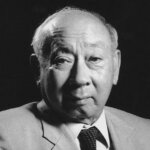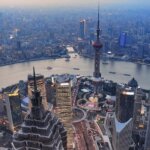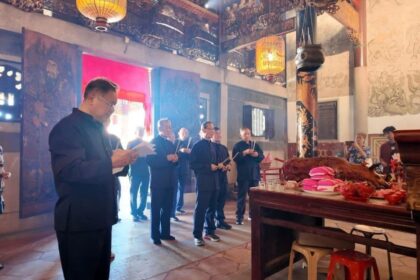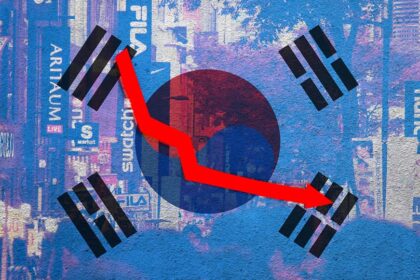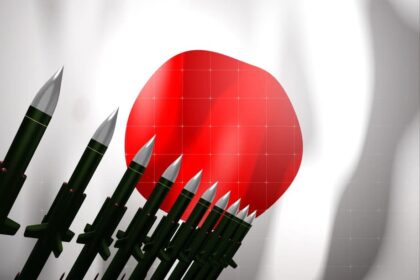Introduction: Defining the Singaporean Identity at 60
As Singapore celebrates its 60th year of independence, the city-state finds itself at a crossroads of reflection and anticipation. While much of the SG60 fanfare centers on commemorative collections and grand events, a deeper question lingers: What truly makes us quintessentially Singaporean? Beyond the iconic dishes and dazzling skyline, Singaporeans share a tapestry of habits, experiences, and quirks that bind them together in ways both subtle and profound. This article explores the lived realities, cultural practices, and evolving identity that define Singaporeans today—delving into the everyday, the historical, and the intangible threads that make up the national fabric.
- Introduction: Defining the Singaporean Identity at 60
- Shared Experiences: The Building Blocks of Singaporean Life
- Multiculturalism: Harmony in Diversity
- Everyday Quirks: The Unmistakable Signs of a Singaporean
- Negotiating Identity: Immigrants, Integration, and the “Singaporean Singapore”
- The Role of State and Policy: Shaping Social Norms and Family Life
- Music, Arts, and the “Singapore Sound”
- Challenges and Opportunities: Towards a More Inclusive Identity
- In Summary
Shared Experiences: The Building Blocks of Singaporean Life
Singapore’s compact geography—just over 735 square kilometers for more than 3 million citizens—means that shared experiences are not just common, but almost inevitable. From the earliest days of primary school to the rites of adulthood, Singaporeans navigate a series of milestones that shape their worldview and sense of belonging.
For many, the journey begins with the introduction to co-curricular activities (CCA) at age nine. Whether joining a sports team, a uniformed group, or a performing arts club, these early choices teach children about responsibility, teamwork, and the consequences of their decisions. The Primary School Leaving Exam (PSLE) looms as a significant rite of passage, often introducing students to the pressures of academic achievement and the resilience needed to overcome challenges.
Outside the classroom, shared cultural touchstones abound. Who can forget reading Mr Midnight or True Singapore Ghost Stories during assembly, or the collective anxiety of waiting for BTO (Build-To-Order) flat results—a uniquely Singaporean prelude to marriage and home ownership? Even the experience of fielding nosy questions from relatives about marriage and children at festive gatherings is a unifying, if sometimes exasperating, national pastime.
These milestones, both big and small, form the backbone of a Singaporean’s journey from childhood to adulthood, creating a sense of collective memory and identity that transcends individual backgrounds.
Multiculturalism: Harmony in Diversity
Singapore’s identity is inextricably linked to its multicultural heritage. The city-state is home to a vibrant mix of Chinese, Malay, Indian, and other ethnic communities, each contributing unique traditions, languages, and beliefs. This diversity is not just tolerated—it is celebrated and woven into the fabric of daily life.
Official policies have played a crucial role in fostering this harmony. The CMIO model (Chinese, Malay, Indian, Others) structures public life, from housing quotas to educational materials, ensuring that no single group dominates and that all have a stake in the nation’s future. The Maintenance of Religious Harmony Act and the work of organizations like the Inter-Religious Organisation (IRO) further safeguard against division, promoting understanding and cooperation across faiths.
Yet, as academic research points out, this model is not without its challenges. The visual and linguistic cues that Singaporeans use to identify race—skin color, language, clothing, names—can sometimes reinforce stereotypes or create awkward encounters, especially as more people of mixed or ambiguous backgrounds call Singapore home. Still, the overarching narrative remains one of unity in diversity, with shared spaces like HDB estates and community centers serving as microcosms of the nation’s multicultural ethos.
Festivals and Traditions: Celebrating Together
Singapore’s calendar is dotted with festivals from every major community—Hari Raya, Deepavali, Lunar New Year, Christmas—each celebrated with open invitations to friends and neighbors of all backgrounds. These occasions are marked by reunions, traditional attire, and the exchange of well-wishes, reinforcing bonds and fostering mutual respect.
Events like the Indian Cultural Fiesta and the Singapore HeritageFest showcase the richness of the nation’s intangible cultural heritage, from Peranakan beadwork to Chinese opera and Malay music. As Deputy Prime Minister Heng Swee Keat noted at the 2025 Indian Cultural Fiesta, “Being Singaporean, and becoming Singaporean, does not mean divesting our cultural roots altogether. It means coming together, building on our commonalities, enriching our shared collective heritage, and building something new and special.”
These celebrations are not mere rituals—they are living expressions of a society that values both its differences and its shared destiny.
Everyday Quirks: The Unmistakable Signs of a Singaporean
Beyond official policies and grand festivals, it is often the everyday quirks that most vividly define what it means to be Singaporean. These habits, shaped by geography, climate, and circumstance, are instantly recognizable to locals and often bemuse outsiders.
- Changi Airport Hangouts: For many Singaporeans, the airport is more than a transit hub—it’s a destination for dining, shopping, movies, and relaxation. The allure of Changi, with its world-class amenities and air-conditioned comfort, makes it a favorite weekend haunt.
- The Uniqlo “Uniform”: The popularity of the Uniqlo Airism oversized T-shirt among Singaporean men has reached near-mythical status, earning it the nickname “Singapore uniform.” Its lightweight, breathable fabric is perfectly suited to the island’s humid climate, making it a staple in wardrobes across the nation.
- Weekend Jaunts to Johor Bahru (JB): Despite perennial grumbling about traffic jams at the Causeway, Singaporeans flock to JB for affordable food, shopping, and massages—a testament to their resourcefulness and love of a good deal.
- “Chope” Culture: The practice of reserving seats in hawker centers with tissue packets or umbrellas is a uniquely Singaporean solution to crowded lunchtime rushes, blending pragmatism with a touch of local humor.
- Singlish and Code-Switching: Perhaps nothing unites Singaporeans more than their distinctive brand of English—Singlish. This creole, peppered with words from Malay, Hokkien, Tamil, and other languages, is both a marker of identity and a tool for navigating the city’s multicultural landscape. As one Reddit user put it, “Singlish unites us all and is distinctively Singaporean.”
These quirks, while sometimes the subject of gentle mockery, are cherished markers of belonging—shared signals that say, “You’re one of us.”
Negotiating Identity: Immigrants, Integration, and the “Singaporean Singapore”
Singapore’s story is also one of constant renewal, shaped by waves of immigration and the ongoing negotiation of what it means to belong. For newcomers, the journey to becoming Singaporean is often marked by both adaptation and preservation of their own heritage.
Personal accounts, such as that of Yanant Aung, a Burmese immigrant, highlight the complexities of integration. She describes the “tug-of-war between integrating into Singaporean society and honouring the traditions that my parents fiercely preserved.” Over time, local habits—like “chope-ing” tables and code-switching between English, Mandarin, and Burmese—became second nature, even as she grappled with the loss of her mother tongue and the bittersweet reality of being “too Burmese to be Singaporean, but too Singaporean to be Burmese.”
Similar dynamics play out within the Chinese community, where newcomers from China may find the local business culture surprisingly “chill” compared to the high-pressure environment back home. While Mandarin is a shared language, differences in mentality and social norms can create barriers to deeper integration. As one observer noted, “Integration is the slogan, while having differences is the everyday reality.”
These stories underscore the evolving nature of Singaporean identity—a process of continual negotiation, adaptation, and, ultimately, acceptance.
The Role of State and Policy: Shaping Social Norms and Family Life
Singapore’s government has long played an active role in shaping the nation’s identity, from promoting multiculturalism to defining the “ideal” family structure. Policies favor the heteronormative, nuclear family, with access to housing and welfare often tied to marital status and parenthood. This approach, rooted in “Asian values” and Confucian ideals, has helped foster stability but also marginalizes alternative family forms, such as single parents or LGBTQIA+ individuals.
Critics argue that these policies discipline citizens into performing certain roles, reinforcing gender and class inequalities. However, there is a growing movement—especially among younger Singaporeans—toward a more inclusive, non-ethnic understanding of what it means to be Singaporean. As society becomes more globalized and diverse, the challenge is to harmonize tradition with the realities of modern life, fostering a sense of belonging that transcends rigid categories.
Music, Arts, and the “Singapore Sound”
Music and the arts have long served as vehicles for expressing and shaping national identity. From school assemblies to National Day parades, the blending of instruments and melodies from different ethnic groups symbolizes the spirit of multiculturalism. Yet, as some cultural commentators caution, there is a risk that such arrangements become formulaic, reducing rich traditions to mere symbols.
As one writer in The Straits Times observed, “The Singapore Sound is not a formula. It must encourage diverse artistic expressions that reflect the lived realities of Singaporeans across generations and cultures.”
Efforts like the Singapore HeritageFest and the work of organizations such as the Singapore Chinese Cultural Centre aim to preserve and revitalize these traditions, ensuring that the arts remain a living, evolving part of the national story.
Challenges and Opportunities: Towards a More Inclusive Identity
As Singapore continues to evolve, new challenges and opportunities emerge. The influx of immigrants, the rise of global influences, and the shifting aspirations of younger generations all test the boundaries of what it means to be Singaporean. Tensions between citizens and newcomers, debates over race and privilege, and the need for open dialogue are all part of the ongoing process of nation-building.
Official speeches and community initiatives emphasize the importance of trust, empathy, and collective effort in maintaining social cohesion. As Senior Minister Lee Hsien Loong noted, the Chinese community—and by extension, all communities—must continue to support national interests and inclusive policies, while respecting and celebrating their own traditions.
Ultimately, the Singaporean identity is not a static set of traits, but a dynamic, encompassing ethos—one that values both unity and diversity, tradition and innovation, individual stories and collective memory.
In Summary
- Singaporean identity is shaped by shared experiences, from school milestones to unique leisure habits like airport hangouts and “chope” culture.
- Multiculturalism is central, with official policies and everyday practices fostering harmony among diverse ethnic and religious groups.
- Everyday quirks—such as the Uniqlo “uniform,” Singlish, and weekend trips to JB—are cherished markers of belonging.
- Immigrants and newcomers negotiate complex journeys of integration, contributing to an evolving, inclusive national identity.
- State policies shape social norms, especially around family and housing, but there is growing advocacy for more inclusive definitions of belonging.
- Music, arts, and festivals play vital roles in expressing and preserving Singapore’s living heritage.
- The Singaporean identity is dynamic, continually adapting to new challenges and opportunities, with unity in diversity as its guiding principle.


